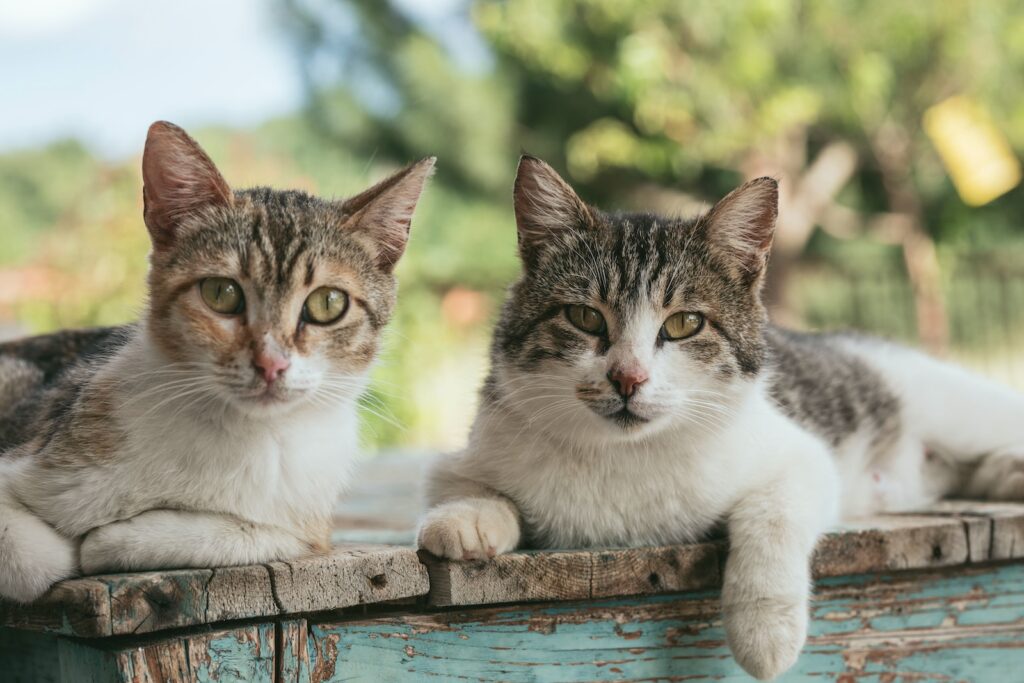Can Cats Eat Bread? — Yes, They can
Bread is a common staple in many households, and it’s natural to wonder whether cats can enjoy this tasty treat as well. The answer is yes, cats can eat bread, but it should only be given to them in moderation.
Can Kittens Eat Bread?
Yes, kittens can eat bread, but it’s important to introduce it gradually and in small amounts. Their delicate digestive systems need time to adjust to new foods, including bread.
Things to consider when feeding bread to kittens?
When feeding bread to kittens, it’s crucial to ensure that the bread is fresh and free from any additives or seasonings that may be harmful to them. Offer small, bite-sized pieces and monitor their reaction to ensure they tolerate it well.
Nutritional Benefits of Bread for Cats — Why Bread is good for Cats?
Tasty and Filling
Bread can be a tasty and filling snack for cats. It provides carbohydrates, which are an important energy source for their active lifestyle.
Source of Fiber
Bread contains dietary fiber, which aids in digestion and promotes a healthy gut. However, it’s essential to choose bread made from whole grains for added nutritional value.
Vitamins and Minerals
Bread made from enriched flour can offer cats small amounts of essential vitamins and minerals, such as B vitamins and iron. Although they can obtain these nutrients from their regular cat food, a small amount of bread can contribute to their overall micronutrient intake.
Potential Allergies: Can Cats Be Allergic to Bread?
Cats can develop allergies to certain ingredients found in bread, such as wheat or gluten. It’s crucial to monitor your cat’s reaction when introducing bread for the first time. If you notice any signs of allergies, such as vomiting, diarrhea, or skin irritations, discontinue feeding bread immediately and consult with your veterinarian.
Symptoms of Bread Allergies in Cats
- Vomiting: Cats may experience vomiting after consuming bread if they are allergic to particular ingredients.
- Diarrhea: Allergic reactions to bread can also manifest as diarrhea in cats.
- Skin Irritations: Some cats may develop itchy skin, redness, or rashes as a result of bread allergies.
What to Do If Your Cat Shows Symptoms?
- Consult Your Veterinarian: If your cat shows any symptoms of allergies after eating bread, it’s crucial to consult your veterinarian for proper diagnosis and guidance.
- Eliminate Bread from their Diet: If bread is determined to be the cause of the allergies, remove it from their diet to prevent further discomfort.
- Explore Other Alternatives: If you want to offer your cat a treat similar to bread, consider cat-friendly alternatives like commercially available cat treats or homemade treats specifically formulated for feline nutrition.
Recommended Amount: How Much Bread Can a Cat Consume?
While cats can enjoy a small amount of bread as an occasional treat, it should never replace their regular balanced cat food. The recommended quantity of bread for cats is less than 10% of their daily caloric intake. It’s essential to remember that cats have specific dietary needs, and their primary diet should consist of high-quality cat food that meets those requirements.
Things to Consider When Feeding Bread to Cats
When offering bread to cats, it’s important to consider the following:
- Choose Plain Bread: Cats should only have plain bread without additives such as garlic, onions, or spices, as these can be toxic to them.
- Monitor Portion Sizes: Keep the quantity small and infrequent to prevent any potential digestive issues.
- Ensure Freshness: Always offer fresh bread and avoid stale or moldy pieces.
- Observe Any Adverse Reactions: Monitor your cat for any signs of allergies or digestive upset after consuming bread.
How to Feed Bread to Cats: A Quick Guide
While it’s important to remember that bread should not replace their regular diet, here are a few fun and safe ways to offer bread as an occasional treat to your feline friend:
Simple Toast Treats
To make a simple toast treat, lightly toast a small piece of plain bread and let it cool. Cut it into bite-sized pieces and offer it to your cat as a special treat.
Tuna Sandwich Bites
For a more indulgent treat, you can prepare tuna sandwich bites using plain bread slices, canned tuna, and a small amount of mayonnaise. Ensure the bread is cut into small, cat-friendly portions without any added seasonings.
Bread Crumbs as Toppers
Sprinkle a small amount of plain bread crumbs over your cat’s regular food as a crunchy and flavorful topping. This adds a textural element to their meal without compromising their overall nutrition.
Conclusion
Bread can be offered to cats as an occasional treat. While cats can eat bread, it should be given in moderation, and the bread should be plain, fresh, and free from any harmful additives. Always observe your cat’s reaction and consult your veterinarian if you notice any adverse symptoms. Remember, bread should never replace their regular balanced cat food, which is essential for their overall health and well-being.






